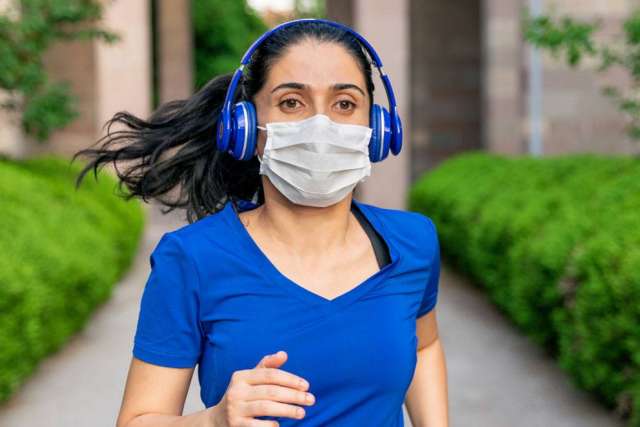Dear Doctors: I’m a 38-year-old man, very athletic, and I got really sick with the coronavirus. I didn’t land in the hospital, but it’s been a month and I’m still not 100%. I want to get back to running and lifting weights. Is it safe to exercise after COVID-19?
Dear Reader: We have to begin with the reminder that we’re still in the early stages of learning about the virus and the disease that it causes. That said, a growing body of research suggests that, for some people who have recovered from COVID-19, a range of adverse health effects can continue after the initial disease has run its course. This is particularly true for older patients and those with pre-existing health conditions. There may also be a link between how severe someone’s illness was and their risk of developing more serious complications once they have recovered.

Although we think of COVID-19 as a respiratory illness, it can damage other organs, adversely affect the body’s blood-clotting mechanisms and cause lingering systemic inflammation. Scans of patients who have recovered from COVID-19 reveal damage to the lungs, heart and kidneys, as well as dangerous levels of blood-clot production. Survivors report lingering pain, shortness of breath, so-called “brain fog” and persistent fatigue. Some people experience heart arrhythmias, and some develop hypertension. A number of recovering patients also find themselves dealing with ongoing episodes of depression and anxiety.
When it comes to exercise, the current advice for people recovering from mild or moderate COVID-19, and who were not hospitalized, is to wait at least two weeks before resuming physical activity. It’s not only much-needed rest; it’s also an opportunity to evaluate how you feel being up and about, what kind of activity causes fatigue and at what point you tire. For those who experience a continual recovery in the weeks after being ill, it is considered safe to gradually resume physical activity once the two-week rest period is over. But it’s important to ease back into being active. Pushing yourself post-illness does more harm than good.
Since you report that you were significantly ill with COVID-19, you should check in with your health care provider before working out again. Describe the course of your illness and everything you’re experiencing since recovering. It’s possible you’ll be asked to undergo some diagnostic tests to assess heart and lung function before being cleared for more vigorous activity. Athletes who have recovered from COVID-19 are finding initial workouts to be challenging. In addition to a light cough and mild shortness of breath, they report a dive in stamina. If you experience more severe symptoms, such as an irregular or racing heartbeat, chest pain or tightness, or severe or long-lasting shortness of breath, it’s important to immediately stop what you’re doing and check in with your health care provider.
Athletes are used to bouncing back from a cold or the flu, and the slow trajectory of COVID-19 recovery can be frustrating. But please don’t try to push it. Moving forward slowly and cautiously is your best shot at a full recovery.
(Send your questions to [email protected]. Owing to the volume of mail, personal replies cannot be provided.)





